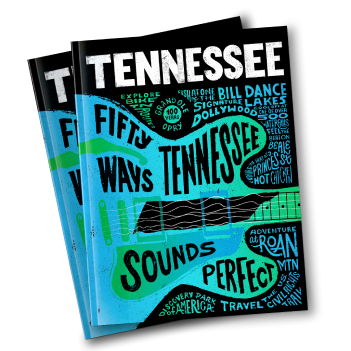
Blessed with classic architectural styles running the gamut from Greek Revival to Italianate, Bolivar's historic districts hearken back to a day when nearly fanatical attention to detail could be seen from initial design to the detailed decorative carvings throughout the buildings. The famed Philadelphia-based architect Fletcher Sloan has left his mark of genius through a number of post-bellum homes that have survived in large measure through the efforts of the local chapter of the Association for the Preservation of Tennessee Antiquities (APTA). The crown jewel of all historic structures, most locals will agree is the famed county courthouse, built (or rather, "rebuilt") in 1868. This elegant structure continues to the present day as the center of county government activity, but whether it's the grand central staircase or the vintage vault in the Recorder's Office, it's impossible not to feel the history when one steps through the high arched doors. Don't forget to stop by the monument to the fallen Civil War soldiers of Hardeman County, believed to be the first monument of its type in west Tennessee.
Grand Ladies of the South walking tour starts at the Historic Hardeman County Courthouse and includes 22 stops as listed below or stop in at the Chamber of Commerce office at 112 S Main St for a brochure guide of the walking tour.
Most of these homes are private residences and are not open to the public. But Hardeman County chapter of the Association for the Preservation of Tennessee Antiquities (APTA) hosts guided tours every spring when some of the homes are open to tour inside. Follow APTA's Facebook page, The Pillars and Little Courthouse, or Hardeman County Chamber of Commerce's Facebook page for announcements on when those tours are scheduled.
- Hardeman County Courthouse (1868), 100 Main St
- The Presbyterian Church (1858), 203 E Market St
- Little Courthouse Museum (1824), 215 E Market St
- The Joy-Baker House (1838), 216 E Market St
- United Sons & Daughters of Charity Lodge Hall (1930), 322 E McNeal St
- Union Cemetery (ca. 1857), McNeal St
- The Pillars (1826), 322 S Washington St
- The Wren's Nest (1869), 309 W Bills St
- McNeal Place (1861), 309 W Bills St
- Polk Family Cemetery (1844), Matilda St
- The Columns (1860), 303 W McNeal St
- The Wright House (1867), 301 McNeal St
- Ingram Hall (1875), S Washington St
- St. James Episcopal Church (1869), 223 W Lafayette St
- The Hudson House (1849), 319 W Lafayette St
- The Old Water Treatment Plant (ca. 1905), 500 W Market St
- The Durrett House (1826), 121 E Jefferson St
- Presbyterian Manse (1869), 429 N Main St
- Magnolia Manor (1849), 418 N Main St
- Mallory Manor (1867), Main St
- Kahn House (1877), 515 N Main St
- The Fentress-Black House (1849), 525 N Main St
More information can be found at Historic Bolivar Tennessee's website.
For the most up-to-date hours and information, please contact Grand Ladies of the South directly.




























